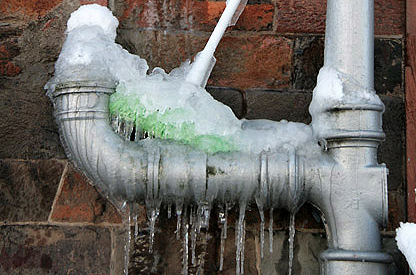Tips to Avoid Frozen Pipes in Cold Weather: Professional Tips
Tips to Avoid Frozen Pipes in Cold Weather: Professional Tips
Blog Article
How do you really feel in relation to 6 Ways to Prevent Frozen Pipes?

Winter can ruin your pipes, specifically by freezing pipelines. Right here's just how to stop it from taking place and what to do if it does.
Intro
As temperatures drop, the risk of icy pipelines boosts, potentially resulting in costly repairs and water damages. Comprehending how to stop frozen pipelines is vital for property owners in cold environments.
Prevention Tips
Protecting vulnerable pipes
Cover pipes in insulation sleeves or make use of warmth tape to secure them from freezing temperatures. Focus on pipelines in unheated or exterior locations of the home.
Home heating techniques
Keep indoor spaces appropriately warmed, particularly areas with plumbing. Open closet doors to allow warm air to distribute around pipes under sinks.
How to determine icy pipes
Look for decreased water flow from faucets, uncommon odors or noises from pipes, and noticeable frost on revealed pipes.
Long-Term Solutions
Architectural changes
Consider rerouting pipelines far from outside wall surfaces or unheated locations. Include additional insulation to attics, basements, and crawl spaces.
Updating insulation
Purchase high-quality insulation for pipelines, attic rooms, and walls. Proper insulation helps keep regular temperature levels and minimizes the danger of frozen pipelines.
Safeguarding Outdoor Pipes
Garden pipes and outdoor taps
Disconnect and drain pipes garden hoses prior to winter season. Mount frost-proof faucets or cover exterior taps with insulated caps.
Comprehending Icy Pipes
What causes pipes to freeze?
Pipes freeze when subjected to temperature levels listed below 32 ° F (0 ° C) for expanded durations. As water inside the pipelines freezes, it expands, putting pressure on the pipe walls and potentially triggering them to rupture.
Dangers and damages
Frozen pipelines can result in water disturbances, residential or commercial property damage, and costly repair work. Burst pipelines can flood homes and cause considerable structural damages.
Indications of Frozen Pipeline
Recognizing frozen pipelines early can stop them from rupturing.
What to Do If Your Pipes Freeze
Immediate activities to take
If you presume frozen pipes, maintain faucets open to eliminate pressure as the ice thaws. Utilize a hairdryer or towels taken in warm water to thaw pipelines gradually.
Verdict
Protecting against frozen pipelines requires aggressive procedures and quick actions. By understanding the reasons, indicators, and preventive measures, home owners can safeguard their plumbing throughout winter.
5 Ways to Prevent Frozen Pipes
Drain Outdoor Faucets and Disconnect Hoses
First, close the shut-off valve that controls the flow of water in the pipe to your outdoor faucet. Then, head outside to disconnect and drain your hose and open the outdoor faucet to allow the water to completely drain out of the line. Turn off the faucet when done. Finally, head back to the shut-off valve and drain the remaining water inside the pipe into a bucket or container. Additionally, if you have a home irrigation system, you should consider hiring an expert to clear the system of water each year.
Insulate Pipes
One of the best and most cost-effective methods for preventing frozen water pipes is to wrap your pipes with insulation. This is especially important for areas in your home that aren’t exposed to heat, such as an attic. We suggest using foam sleeves, which can typically be found at your local hardware store.
Keep Heat Running at 65
Your pipes are located inside your walls, and the temperature there is much colder than the rest of the house. To prevent your pipes from freezing, The Insurance Information Institute suggests that you keep your home heated to at least 65 degrees, even when traveling. You may want to invest in smart devices that can keep an eye on the temperature in your home while you’re away.
Leave Water Dripping
Moving water — even a small trickle — can prevent ice from forming inside your pipes. When freezing temps are imminent, start a drip of water from all faucets that serve exposed pipes. Leaving a few faucets running will also help relieve pressure inside the pipes and help prevent a rupture if the water inside freezes.
Open Cupboard Doors
Warm your kitchen and bathroom pipes by opening cupboards and vanities. You should also leave your interior doors ajar to help warm air circulate evenly throughout your home.

Do you really like reading up on How to prepare your home plumbing for winter weather? Put a remark down the page. We will be delighted to hear your feelings about this page. We are looking forward that you visit us again later on. Enjoyed reading our piece of writing? Please quickly share it. Help other people locate it. I praise you for being here. Kindly come visit our website back soon.
View More Report this page